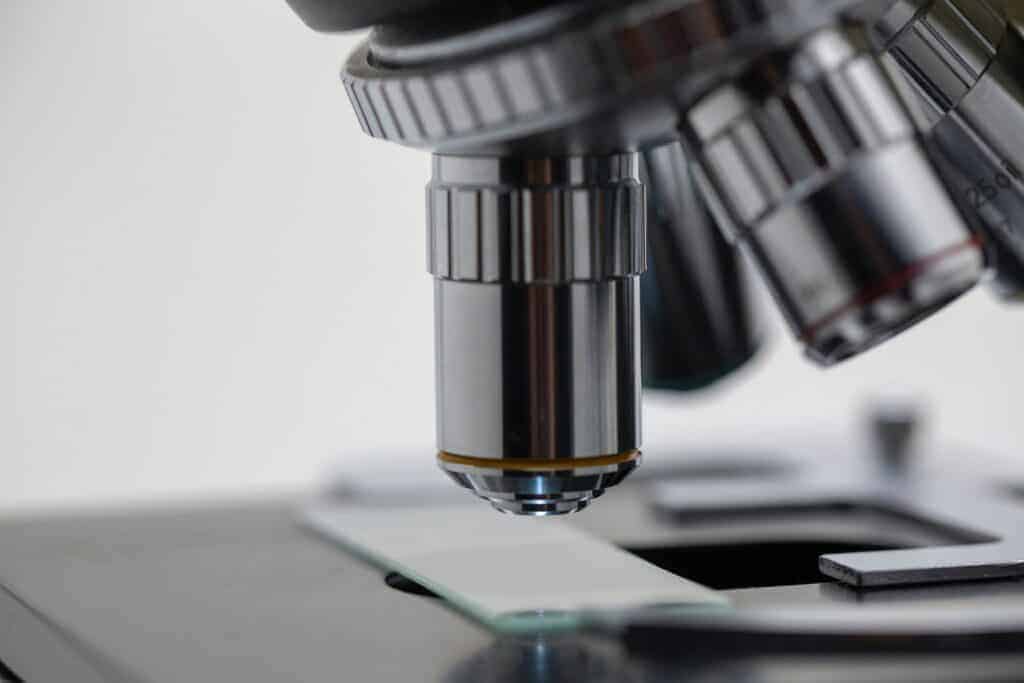The topic of endometriosis is being reported more and more often in the media. It is important that this disease is increasingly becoming the focus, because up to 10% of women of childbearing age suffer from it (Gätje et al. 2015). This makes endometriosis a common disease in gynecology. However, many women do not know anything about their disease and are therefore not treated. But what exactly is endometriosis?
Important advice: this text can not replace a doctor's visit or personal medical consultation. Please always contact your doctor if you have any questions, problems or anything is unclear. Our medical texts are written by specialists (e.g. medical journalists, doctors, medical students shortly before the end of their studies, doctoral students in medical fields); however, we can not guarantee the correctness or liability for their content.

The term endometriosis includes the word "endometrium", which in medicine describes the tissue that lines the uterus. The endometrium builds up during the cycle and is expelled during the period, causing monthly bleeding. By the endometriosis, this tissue can also be found outside the uterus. The places where these cell associations can lie are very different. The scattered tissue is called endometrial focus. In some women, it is in the muscle layer of the uterus. Other locations (so-called localizations) are superficial or as a cyst (a cyst is a fluid-filled cavity) e.g. on the ovary. The cells of the endometrium can also grow deep into other tissues. This means that they can also affect the bladder or the rectum. More rarely, endometrial growths are also found in places far away from the uterus, e.g. the diaphragm. In fact, there is hardly an organ inside the abdomen that can not be affected. However, these places are rather unusual (Alimi et al. 2018).
Endometriosis is dependent on estrogen. This is why it is mainly found in women of childbearing age, as they produce a lot of this hormone. The diagnosis is most often made in women between the ages of 30 and 40. Before the first period and after menopause, endometriosis is extremely rare.
Since hormones have an influence on the development of the disease, risk factors include an early first period, short cycle lengths, childlessness and a late first pregnancy. Affected family members also increase the individual risk (Parasar et al. 2017).
The cause of the development of the disease is still unclear. There are several theories as to how the uterine tissue can be scattered and nested. A recognized theory assumes that the endometrial cells are carried away by menstrual blood, which flows through the fallopian tubes into the abdomen. However, since this phenomenon occurs in 90% of women, it can not be the only factor in the development of endometriosis. That is why there are other theories which, for example, assume a conversion of other cell types to endometrial cells. So far, all theories are insufficient to fully explain endometriosis. Doctors therefore believe that various factors have an influence (Alimi et al. 2018).

Endometriosis can express itself differently in every woman, but there is often severe pain during the period that may need to be treated with painkillers. The gynecologist then speaks of dysmenorrhea. These pains often only appear in the course of life and have not been present since adolescence. Often menstrual bleeding is increased and prolonged. Pain in the lower abdomen, which occurs regularly before the menstrual period, and pain during sexual intercourse (so-called dyspareunia) are typical symptoms. The signs of endometriosis depend on the localization of the foci. Therefore, pain when urinating or problems with bowel movements can occur (Alimi et al. 2018).
Symptoms and evidence of endometrial tissue are important in diagnosing endometriosis. When examining other diseases, the foci can also be found in women who have no symptoms. Only in combination with symptoms does endometriosis require treatment (Gätje et al. 2015).
Endometriosis is caused by uterine tissue that has spread to other organs. As a result, patients often develop pain, especially during their period.
Endometriosis causes severe pain during the menstrual period. Pain during sexual intercourse, urination, or bowel movements can also be signs of it. A diagnosis can often only be clarified by an MRI and a sample collection as part of a abdominoscopy.
In addition to the great suffering caused by the pain, many women also suffer from infertility, i.e. they have problems getting pregnant.
Endometriosis is dependent on the hormone estrogen. This is why it occurs in women between the first period and menopause. Endometriosis is most commonly diagnosed between the ages of 30 and 40.
Endometriosis therapy aims to relieve pain and symptoms and enable pregnancy. There are drugs that contain hormones and that can be used over a period of time. Surgical removal of the endometrial foci is also an important component in therapy. An individual concept should be developed for each woman. Psychological support can also be important for some women.
If the gynecologist suspects endometriosis based on the description and questioning of the patient, further steps to confirm the diagnosis should be discussed with the patient. Typical questions to be asked to the patient are whether there are cycle-dependent pain and symptoms. The gynecological examination can and should even be carried out during the menstrual period, because the endometrial foci can then be felt particularly well. The doctor should take a close look at the genitals of the patient from the outside and, with the speculum, from the inside. A palpation of the vagina and possibly of the rectum are also part of the examination. An ultrasound of the abdominal wall and vagina can show cystic structures that could be signs of endometriosis. If these examinations have hardened the suspicion of endometriosis, a abdominoscopy should be performed to confirm the diagnosis, to obtain samples and to be able to determine the stage of the disease. This is an operation in which the abdomen is inflated with air and a camera and instruments can be inserted through small openings through the abdominal wall. The doctors can then directly recognize the endometriosis foci as small bluish dots on the abdominal organs. By such an operation, samples should always be taken, to let them be microscopically examined. In this way the diagnosis can finally be made. Further examinations of the bladder or of the rectum may also be needed to determine the extent of the disease. Magnetic resonance imaging (MRI) is a radiological method of making a diagnosis. Here the patient lies in a tube and images of the abdomen are taken without X-rays. Depending on the location, the foci can be shown very well (Parasar et al. 2017).
Endometriosis affects one in ten women in the population. But among women who have problems getting pregnant, gynecologists estimate the proportion of patients with endometriosis to be 40-70% (Gätje, R., 2015). If, despite regular and unprotected sexual intercourse, no pregnancy occurs for a year, it is called sterility. The reasons for sterility can lie with both partners and are numerous. Due to its frequency, endometriosis is not uncommon as a cause. The mechanisms that lead to sterility due to endometriosis have not been finally clarified. In some women, the endometrial foci lead to adhesions that can limit the function of the fallopian tubes. The women can be helped here by dissolving the adhesions (Diagnosis and therapy of endometriosis. Guideline of the DGGG, SGGG and OEGGG. 2020).
Endometrial foci rarely develop into cancer. However, endometriosis increases the risk of ovarian tumors. It is therefore important to attend the normal preventive medical check-ups with the gynecologist (Gätje et al. 2015).
If the symptoms are severe, an attempt should be made to completely remove the endometrial foci. This can already be done during the abdominoscopy for diagnosis. Ovarian cysts should also be surgically removed. The extensions of the surgical removal till the inclusion of the removal of the uterus or other tissue must be discussed individually with each patient. Important factors are the desire to have children or completed family planning, age, extent of the results and stress. Some women have reasons not to have a abdominoscopy. An operation is then carried out via an abdominal incision.
Hormone therapy is of great importance in the therapy of endometriosis. As mentioned earlier, the endometrial foci are responsive to estrogen. On the endometrium are the opponents of estrogen, the progestins. Progestins are also hormones that play an important role in the female cycle. For this reason, progestin supplements or birth control pills with a high percentage of progestin can be used. An alternative to this are drugs that downregulate hormone production. This therapy is usually carried out for three to six months. Of course, severe pain before or during the period should also be treated with painkillers (Diagnosis and therapy of endometriosis. Guideline of the DGGG, SGGG and OEGGG. 2020).
Since the disease can have a strong influence on the quality of life of women, it is sometimes helpful to seek psychological support (Vitale et al. 2017).
Therapy can provide relief for many patients. The modern methods of reproductive medicine can also support many women today, when they want to have children. Endometriosis is rarely completely cured, however, spontaneous healing can occur after pregnancy and after menopause (Gätje et al. 2015).
If any of the symptoms apply to you, it is important to speak to your gynecologist. They can confirm or rule out your suspicions through their experience and an initial examination. Further diagnostics are often carried out in special centers. Therapy can also be planned there. Such centers are particularly important for women with endometriosis and wanting to have children. Although some symptoms, such as problems with bowel movements, can be associated with shame, it is important to talk to your doctor about them.
Alimi, Y., et al. (2018), The Clinical Anatomy of Endometriosis: A Review, Cureus, 10 (9), e3361.
Gätje, Regine, et al. (2015), Kurzlehrbuch Gynäkologie und Geburtshilfe (Georg Thieme Verlag).
Parasar, P., Ozcan, P., and Terry, K. L. (2017), Endometriosis: Epidemiology, Diagnosis and Clinical Management, Curr Obstet Gynecol Rep, 6 (1), 34-41.
Vitale, Salvatore Giovanni, et al. (2017), Impact of endometriosis on quality of life and psychological well-being, Journal of Psychosomatic Obstetrics & Gynecology, 38 (4), 317-19.
Diagnosis and therapy of endometriosis. Guideline of the DGGG, SGGG and OEGGG (S2k- Level, AWMF Registry No. 045/015, August 2020).
You can find many Questions & Answers in our Frequently Asked Questions (FAQ).
Unsure about the right size? See our size chart!
Click one of the items below to get started.